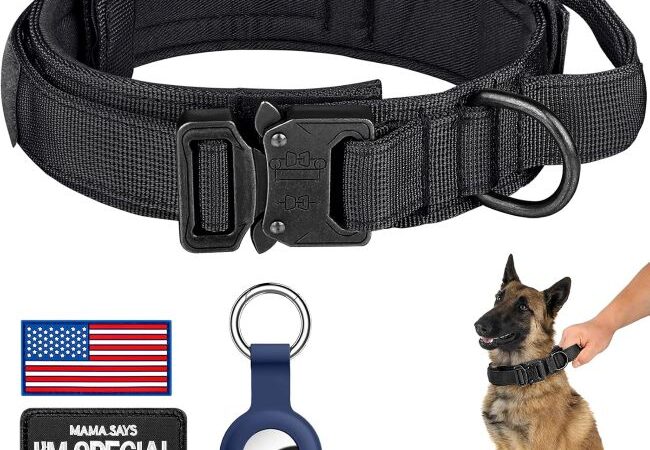
How to Jump Rope Longer: The Perfect Method For Fitness Beginners
Jump rope may seem like a simple exercise, but it can be intensely effective if done properly. In this blog post, we’ll outline the basics of jump rope, provide tips on how to improve your technique, and suggest some beginner-friendly routines that will help you reach your fitness goals. So whether you’re a beginner looking to up their endurance or an experienced jumper looking for new challenges, read on for all the info you need to jump rope longer!
Contents at a Glance
ToggleHow to jump rope longer?
Jumping rope is a great way to improve your fitness and tone your body. If you’re a beginner, follow these simple steps to jump rope longer: 1. Start by warming up your body by doing some cardio before you start jumping rope. 2. Start by jumping rope without much intensity at first. 3. As you get better, gradually increase the intensity of your jumps. 4. Remember to take your time and enjoy the workout! Jumping rope is a fun, challenging and effective way to stay healthy and fit.
Jump rope basics
If you’re looking for a great way to get fit, jump rope is the perfect solution. It’s easy to do, can be done by almost anyone, and the benefits are endless. To get started, you’ll need to learn the basics – how to hold the rope, how to swing it, and how to jump. Once you know these basics, you can begin adding variety to your routine by doing circuits or lifts with the rope. Adding a little bit of variety to your jump rope routine will help you stay motivated and keep your workout interesting. So, whether you’re a fitness beginner or an experienced jumper, jump rope is a great way to stay active and healthy!
1. Use both hands equally – when jumping, try to use both hands equally and keep your arms stable throughout the movement.
2. Keep your back slightly arched – when you jump, make sure to keep your back slightly arched so that you add more power to each jump.
3. Breathe through your nose – when jumping rope, take a deep breath and hold it until the next jump is complete.
4. Jump with intention- When you jump rope, think about what you’re going to do with the rope. Jumping without any intention will result in poor technique and a weaker jump. Follow your regular routine, but focus on using your muscles to power each jump instead of just relying on momentum.
5. Be patient- Don’t be discouraged if your jumps aren’t perfect at first. With time and practice, you will get better and jump rope will become a part of your regular fitness routine. Adding variety to your jump rope routine will help you stay motivated and keep your workout interesting. So, whether you’re a fitness beginner or an experienced jumper, jump rope is a great way to stay active and healthy!
Tips to improve jumping rope longer technique
Jumping rope is a great way to stay fit and healthy, but it can be a little challenging for beginners. To make it easier, follow these tips to improve your jumping rope technique:
1. Always warm up before beginning a new jumping rope routine.
2. Try using different hand positions during your jump rope routine to target different muscle groups.
3. Add some timed intervals in between sets for an extra challenge.
4. Start with a slow and controlled pace to get the most out of your jump rope workout.
5. Use a weighted rope to increase the intensity of your workout.
If you’re looking for a fun, challenging workout that can help improve your flexibility and coordination, jumping rope is a great option. And with these tips, you’ll be able to jump rope longer with improved technique!
Find your fit
There’s no need to be afraid of jump rope – with the right method and fit, you can easily jump rope for a longer period of time. The first step is to find the right type of jump rope for your fitness level. Once you find the right rope for you, start timing yourself and work your way up from there. Remember to count each swing and try not to speed up or slow down too much between swings – this will ensure a consistent workout. Next, warm up by doing some simple exercises before jumping rope. This will help your muscles relax and prepare for the harder workout ahead. So, are you ready to jump rope like a pro? Let’s get started! Be safe!
Remember to always be safe when participating in any physical activity. Make sure you get a proper fit and warm up before beginning your routine. And, of course, always wear appropriate safety gear – this includes shoes that are sturdy and comfortable, as well as pads if you’re using a weighted rope. Finally, make sure to take care of your body by drinking plenty of water throughout the day and sticking to a healthy diet overall. With these tips in mind, jumping rope can be an enjoyable way to stay fit!
7 Best JUMP ROPE Routines for Fitness Beginners
1. JUMP ROPE Hamstring Curl
This routine is designed to target the hamstrings and glutes. Use a lightweight jump rope for this routine, and start by standing with your feet hip-width apart, grabbing the handles of the jump rope with your left hand and pulling it towards you until your arm is fully extended. Slowly return to starting position. Do three repetitions on each side.
2. JUMP ROPE Glute Bridge
Start in a low squat position with legs together and knees slightly bent, holding one end of the jump rope in each hand . Keeping your core engaged, slowly raise your body upward until you’re standing up tall. Reverse the motion and slowly lower yourself back to starting position. Do two repetitions on each side.
3. JUMP ROPE Side Leg Raise
Beginning in a side lunge position with feet together and hands rested on hips, jump rope with both arms at once to the right then left as quickly as possible, maintaining tension throughout the entire movement. Repeat on other side.
4. JUMP ROPE Hurdle Lunge With Jump rope Extension
Starting in a low squat position with legs together and knees slightly bent, extend one leg behind you while jumping rope. When the other foot comes down to the ground, immediately jump over it and continue moving forward. Keep your back straight as you move through this movement.
5. JUMP ROPE Glute Bridge With Jump rope Extension
Start in a low squat position with legs together and knees slightly bent, extend one leg behind you while jumping rope. When the other foot comes down to the ground, immediately jump over it and continue moving forward – bringing your arms overhead at the same time for a glute bridge pose . Keep your back straight as you move through this movement.
6. JUMP ROPE Hurdle Lunge With Jump rope Extension
Starting in a low squat position with legs together and knees slightly bent, extend one leg behind you while jumping rope. When the other foot comes down to the ground, immediately jump over it and continue moving forward – bringing your arms overhead at the same time for a hurdle lunge . Keep your back straight as you move through this movement.
7. JUMP ROPE Glute Bridge With Jump rope Extension
Start in a low squat position with legs together and knees slightly bent, extend one leg behind you while jumping rope. When the other foot comes down to the ground, immediately jump over it and continue moving forward – bringing your arms overhead at the same time for a glute bridge pose . Keep your back straight as you move through this movement.
Practice jumping rope on a daily basis
Jumping rope is a great way to increase your fitness level and build stamina. It’s also great for improving coordination, balance, and strengthening of muscles in the body. To start with, jump rope on shorter intervals (10 seconds each) and gradually work your way up to longer intervals (30 seconds or more). This way, you’ll be jump rope training without even realizing it! To make the most of your jumping rope workouts, make sure to memorize the pattern of jumping rope. This will make training much easier and more enjoyable. So go ahead, jump rope and start building your fitness regime today!
Common Jump Rope Mistakes
1. Jumping rope without a consistent rhythm will not give you the optimal workout and can definitely be frustrating. Make sure to time your jumps and maintain a consistent pace throughout your routine.
2. Not warming up before jumping rope can lead to injuries down the road, so be sure to stretch properly before beginning your session.
3. Don’t overdo it! Excessively swinging the ropes around will not result in improved fitness and may even damage your equipment. Be sensible with how much you swing each time you jump rope, and focus on keeping an even tempo for best results.
4. It’s important to keep your feet shoulder-width apart when jumping rope to ensure that you are providing the most efficient workout for your legs and core.
5. Don’t slack off after you’ve completed a set! Immediately follow your session with some post-workout stretching to help increase flexibility and reduce potential muscle fatigue.
6. Jump rope isn’t just for kids! Old-timers and even those who are not particularly fit can still reap the benefits by incorporating jumping rope into their regular routine. Just remember to gradually increase your intensity as you become more conditioned, and be sure to partner it up with some other form of healthy exercise such as running or biking.
Conclusion
Jump rope is a great way to stay fit and healthy, and it’s a great beginner workout. However, it can be difficult to jump rope for long periods of time without proper technique. In this blog, we have outlined the best methods for improving your jumping rope technique so that you can jump rope longer without difficulty. Make sure to practice the techniques outlined in this blog on a daily basis to jump rope longer and stay fit!





